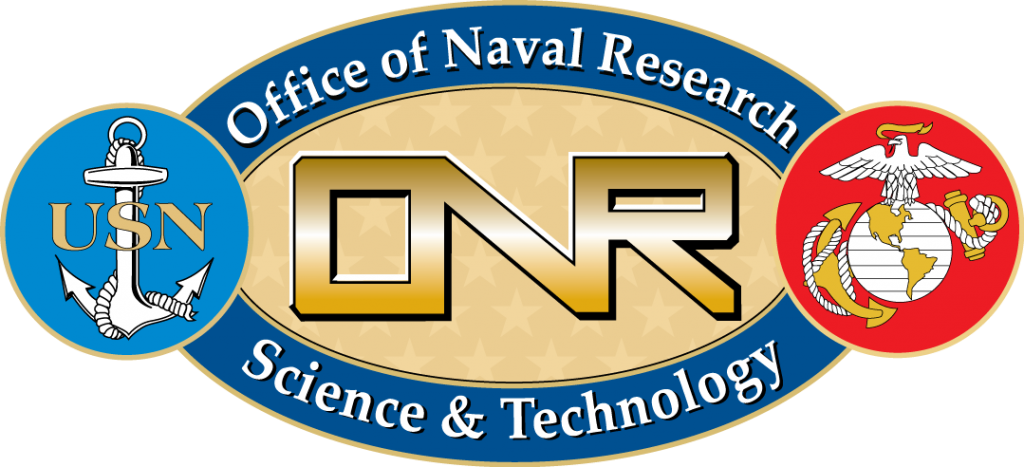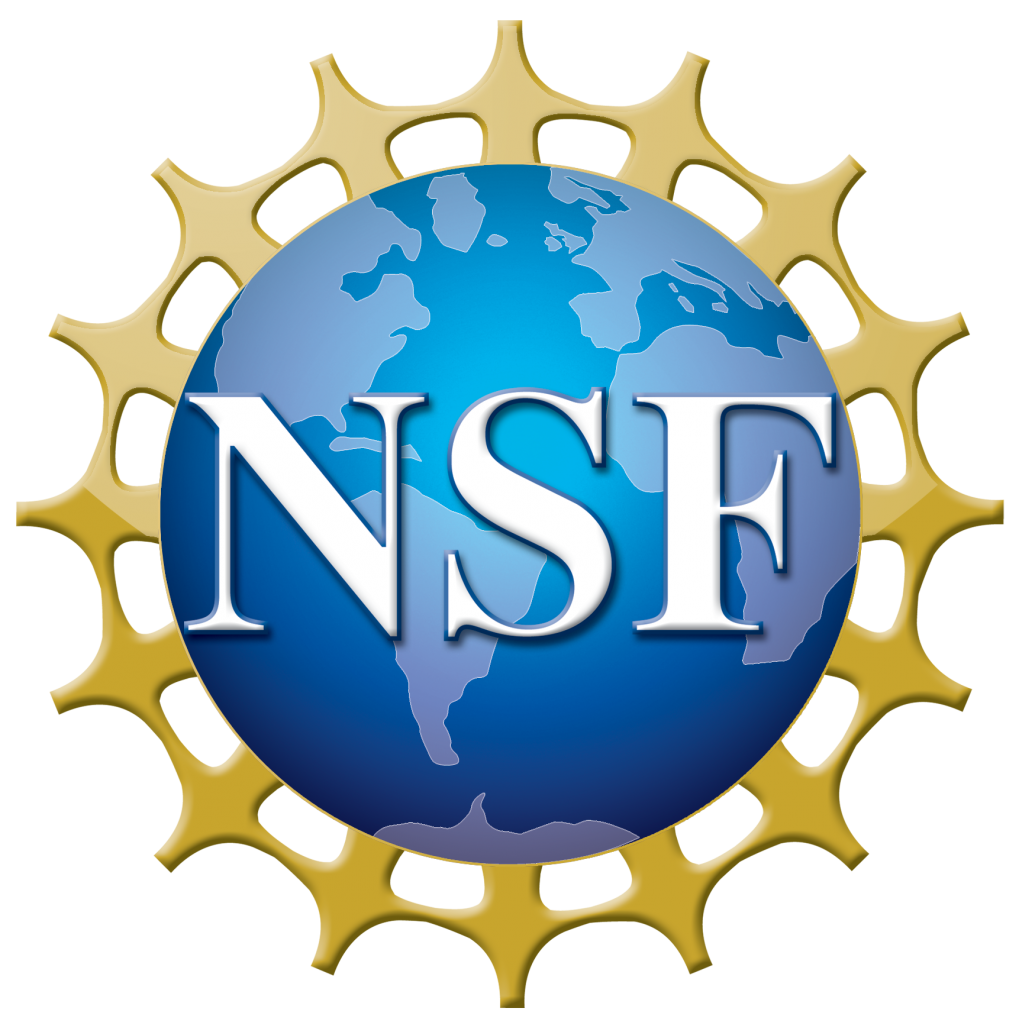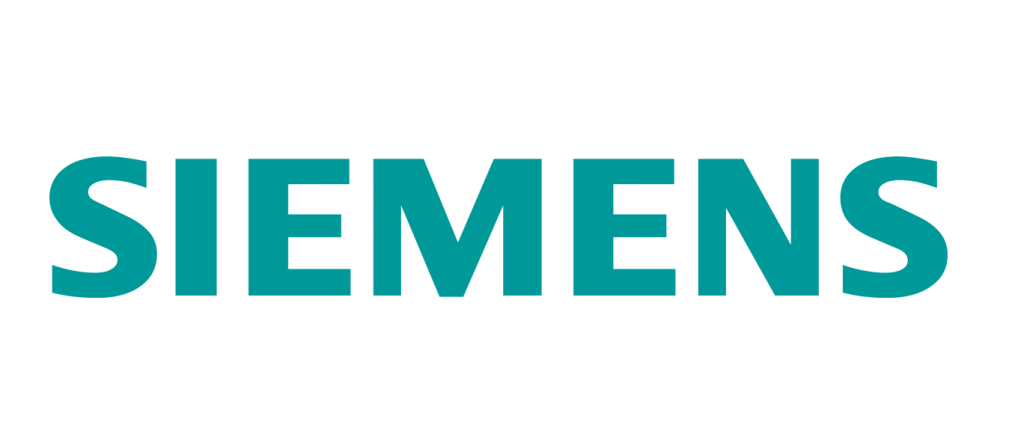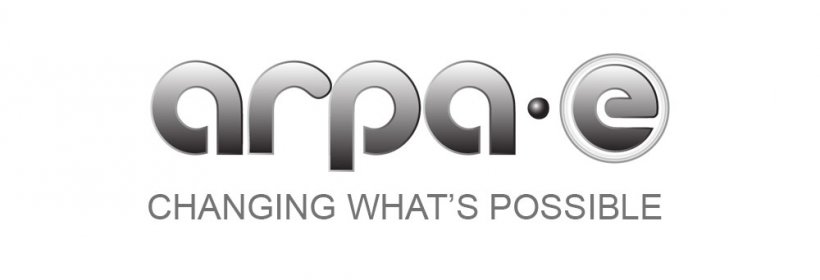Scroll down for summaries of select projects. A comprehensive list of publications can be found here. In addition, presentations made on some of the research topics can be seen in the videos below.
Mar 2021: Heat Recovery Steam Generator Modeling
April 2022: Wind Turbine Modeling
This project has involved modeling and control of floating offshore wind turbines (FOWTs). FOWTs are multi-physics systems. Their dynamics are influenced by vibrational effects, aerodynamics and hydrodynamics. We have adopted an acausal modeling paradigm in developing control-oriented models of FOWTs that capture these interconnected phenomena. As part of a Control Co-Design (CCD) effort, model development and control considerations are pursued concurrently. This is an ongoing research. Some contributions and news are:
- Mohammad Odeh – PhD Dissertation 2024
- Doyal Sarker – MS Thesis 2024
- Kazi Mohsin – MS Thesis 2023
- Tajuba Hasan – MS Thesis 2023 – Check link for University and College Best Thesis Awards received by this work
- D. Sarker, T. Hasan, T. Ngo, T. Das, “Causality-Free Modeling and Validation of a Semisubmersible Floating Offshore Wind Turbine Platform With Tuned Mass Dampers,” IEEE Journal of Oceanic Engineering, 2024, (https://doi.org/10.1109/JOE.2024.3436773)
- D. Sarker, T. Dung, K. Mohsin, M. Odeh, T. Ngo, T. Das, “Modeling, Validation, and Control of the IEA-15MW Reference Wind Turbine and VolturnUS-S Platform,” Proceedings of 2024 Modeling, Estimation and Control Conference, Chicago, IL, October 28-30, 2024 (https://doi.org/10.1016/j.ifacol.2024.12.001)
- K. Mohsin, M. Odeh, T. Ngo, T. Das, “Multivariable Control Design for Load Reduction on Wind Turbines,” Proceedings of 2024 Modeling, Estimation and Control Conference, Chicago, IL, October 28-30, 2024 (https://doi.org/10.1016/j.ifacol.2025.01.100)
- D. Sarker, T. Hasan, T. Ngo, T. Das, “Causality-Free Modeling of a Floating Wind Turbine Semisubmersible Platform with Validation Results,” Proceedings of 2023 Modeling, Estimation and Control Conference, Lake Tahoe, NV, October 2-5, 2023 (https://doi.org/10.1016/j.ifacol.2023.12.083)
- T. Hasan, D. Sarker, T. Ngo, T. Das, “Stabilization of the Wind Turbine Floating Platform using Mooring Actuation,” Proceedings of 2023 Modeling, Estimation and Control Conference, Lake Tahoe, NV, October 2-5, 2023 (https://doi.org/10.1016/j.ifacol.2023.12.079)
- L. Wang, R. Bergua, A. Robertson, J. Jonkman, T. Ngo, T. Das, D. Sarker, F. Fabregas Flavia, R. Harries, M. Fowler, E. Lenfest, J. López Muro, L. Burlion, O. Bilgen, “Experimental Validation of Models of a Hull-Based Tuned Mass Damper System for a Semisubmersible Floating Offshore Wind Turbine Platform,” Journal of Physics: Conference Series, 2023, 2626, 012067 (13 pages), (https://doi.org/10.1088/1742-6596/2626/1/012067)
- M. Odeh, K. Mohsin, T. Ngo, D. Zalkind, J. Jonkman, A. Wright, A. Robertson, T. Das, “Development of a Wind Turbine Model and Simulation Platform Using an Acausal Approach: Multi-Physics Modeling, Validation and Control,” Wind Energy, 2023, 6(9), 85‐1011, (https://doi.org/10.1002/we.2853)
- K. Mohsin, M. Odeh, T. Ngo, T.Das, “Load Reduction of Wind Turbines Using Integrated Torque, Collective Pitch, and Individual Pitch Control Actions,” Proceedings of the 2023 American Control Conference, San Diego, CA, May 31 – June 2, 2023 (https://doi.org/10.23919/ACC55779.2023.10156361)
- N. Mendoza, A. Robertson, A. Wright, J. Jonkman, L. Wang, R. Bergua, T. Ngo, T. Das, M. Odeh, K. Mohsin, F. F. Flavia, B. Child, G. Bangga, M. Fowler, A. Goupee, R. Kimball, E. Lenfest, A. Viselli, “Verification and Validation of Model-Scale Turbine Performance and Control Strategies for the IEA Wind 15-MW Reference Wind Turbine,” Energies, October 2022, 15(20), 7649, (https://doi.org/10.3390/en15207649).
- K. Mohsin, M. Odeh, T. Ngo, T. Das, “Causality-Free Modeling of a Wind Turbine with Open-Loop and Closed-Loop Validation Results,” Proceedings of the 2022 Modeling, Estimation and Control Conference, Jersey City, NJ, October 2-5, 2022 (https://doi.org/10.1016/j.ifacol.2022.11.166).
- G. Semrau, S. Rimkus, T. Das, “Nonlinear Systems Analysis and Control of Variable Speed Wind Turbines for Multiregime Operation” ASME Journal of Dynamic Systems Measurement and Control, Vol. 137, No. 4, April 2015, (doi: 10.1115/1.4028775)
- News: UCF Researcher Leads $3.3 Million Project to Develop Floating Offshore Wind Turbine Simulators
- News: ARPA-e Funded Project on FOWT Systems.
- ARPA-e ATLAS Competition – 3rd Place Winner.
- Control Co-Design Presentation at ARPA-e.
Select Publications on different subtopics:
Robust Control of Hybrid SOFC systems, Transient Control, Observer Design
- S. Abeysiriwardena, T. Das, “Integral Feedback for a Class of Nonlinear Systems: Absolute Stability and Induced Limit Cycles.” ASME Journal of Dynamic Systems, Measurements and Control, Vol. 140, Apr. 2018, pages 041009-(1-8), (doi:10.1115/1.4037837)
- O. Madani, T. Das, “Feedforward based Transient Control in Solid Oxide Fuel Cells” Control Engineering Practice, Vol. 56, Nov. 2016, pages 86-91, (doi: 10.1016/j.conengprac.2016.08.008)
- S. Abeysiriwardena, T. Das, “An Adaptive Observer for Recirculation based Solid Oxide Fuel Cells” ASME Journal of Dynamic Systems, Measurements and Control, Vol. 138, No. 8, 2016, 081004-(1-11)(doi:10.1115/1.4033271)
- W. Nowak, D. Geiyer, T. Das, “Absolute Stability Analysis Using the Lie’nard Equation: A Study Derived from Control of Hybrid Fuel Cells,” ASME Journal of Dynamic Systems, Measurements and Control, Vol. 138, No. 3, March 2016, pp. 031007-1 – 031007-10 (doi:10.1115/1.4032318)
- O. Madani, A. Bhattacharjee, T. Das, “Decentralized Power Management in a Hybrid Fuel Cell Ultracapacitor System” IEEE Transactions on Control Systems Technology, Vol. 24, No. 3, 2016, 765-778, (doi: 10.1109/TCST.2015.2464295)
- T. Das, S. Snyder, “Robust Adaptive Control of Solid Oxide Fuel Cell Ultra-Capacitor Hybrid Systems.” IEEE Transactions on Control Systems Technology, Vol. 21, No. 2, March 2013. (Link to article)
- T. Allag, T. Das, “Robust Nonlinear Control of Solid Oxide Fuel Cell Ultra-Capacitor Hybrid Systems” IEEE Transactions on Control Systems Technology, Vol. 20, No. 1, January 2012.(pdf) (Link to article)
Invariant Property of SOFC Systems
- A. Slippey, O. Madani, K. Nishtala, T. Das, “Invariant Properties of Solid Oxide Fuel Cell Systems with Integrated Reformers” Energy, Vol. 90, Part 1, October 2015, pp. 452-463. (doi: 10.1016/j.energy.2015.07.076)
SOFC Modeling and Characterization
- T. Das, S. Narayanan, R. Mukherjee, “Steady-State and Transient Analysis of a Steam Reformer Based Solid Oxide Fuel Cell System” ASME Journal of Fuel Cell Science and Technology, Vol. 7, No. 1, February 2010. (pdf)
The work explores energy-optimal solution to the guidance problem of an AUV. It seeks lower level control of AUV paths, facilitating existing global planning methods to be carried out comparatively more efficiently. The underlying concept is to use the energy of fluid flow fields the AUVs are navigating to extend the duration of missions. This allows gathering of comparatively more data with higher spatio-temporal resolution. The simplistic way the problem is posed allows an analytical closed form solution of the Euler-Lagrange equations. Two dimensional thrust vectors are obtained as optimal control inputs. The control inputs are then incorporated into a feedback structure, allowing the particle to navigate in the presence of disturbance in the flow field. The work also explores the influence of fluid-particle interaction on the control cost. The concept of changing the cost weights of the optimal cost formulation in situ has been introduced.
- S. Abeysiriwardena, T. Das, “Energy-Optimal Guidance of an AUV Under Disturbance and Fluid-Particle Interaction.” AIAA Journal of Guidance, Control, and Dynamics, Vol. 42, No. 6, 2019, pages 1393-1401, (doi: 10.2514/1.G003695)
- S. Abeysiriwardena, T. Das, “Optimal Guidance of a Self-propelled Particle in a Non-uniform Flow,” Proceedings of the 2019 American Control Conference, Philadelphia, PA, 10-12 July 2019, pages 3587- 3592 (doi: 10.23919/ACC.2019.8814316)
- S. Abeysiriwardena, T. Das, “Optimal Control of a Self-propelled Particle in a Fluid Flow Field” Proceedings of the 2018 American Control Conference, Milwaukee, WI, June 2018,(doi: 10.23919/ACC.2018.8430993)
- Dissertation: Singith Abeysiriwardena
This project has involved the development of a dynamic model of Heat Recovery Steam Generators (HRSG). The model captures the transient behavior of an HRSG system, allowing simulation of start-up, shutdown and fluctuations. The model captures transient pressure dynamics, mass and heat transfer, phase change, etc., and the coupling of these simultaneous physical phenomena. The project has led to a number of publications. Select recent works are given below. Check Publications for detailed list of papers.
- Thesis – Andres Caesar
- Thesis – Jonathan McConnell
- Thesis – Mohammad Odeh
- Thesis – Richard Perman
- Thesis – Jose Chalarca
- J. McConnell, T. Das, A. Caesar, P. Veeravalli, “Modeling and Simulation of a Multistage Heat Recovery Steam Generator,” Simulation: Transactions of The Society for Modeling and Simulation International, November 2022, Vol. 99(2), pp. 169-182 (https://doi.org/10.1177/00375497221130098).
- J. McConnell, T. Das, A. Caesar, J. Hoy, P. Veeravalli, “Multi-Physics Dynamic Modeling and Transient Simulation of a Multi-Stage Heat Recovery Steam Generator (HRSG),” Proc. ASME 2019 Dyn. Sys. and Ctrl. Conf., Park City, UT, October 8–11, 2019, (doi: 10.1115/DSCC2019-9084)
This research addressed distributed proportional power-sharing of inverter-based distributed generators (DGs) in microgrid. A microgrid can include renewable energy resources such as wind turbines, solar panels, fuel cells, etc. The intermittent nature of such energy resources causes variations in their maximum power capacities. Using the Multi-Agent Systems (MASs) concept, a consensus algorithm was designed to have the DGs to generate their output power in proportion to their maximum capacities under capacity fluctuations while also meeting load demand during transient durations. Simulation of a microgrid, consisting of realistic mathematical models of inverter-based DGs, was conducted.
- F. Aalipour, T. Das, “Proportional Power-Sharing Control of Distributed Generators in Microgrids,” IEEE Transactions on Control Systems Technology, Vol. 30(2), 481 – 494, Mar. 2022, (doi: 10.1109/TCST.2021.3068386)
- F. Aalipour, T. Das, “Proportional Power Sharing Consensus in Distributed Generators,” Proceedings of the ASME 2018 Dynamic Systems and Control Conference, DSCC2018, Atlanta, GA, Sep 30-Oct 3, 2018, (doi: 10.1115/DSCC2018-9023)
- T. Das, “Asymptotic Stability of the Sphere’s Rolling Equilibrium” ASME Letters in Dynamic Systems and Control, Vol.2, No.1, May 2021, 011002 (5 pages), (doi: 10.1115/1.4050980)
- E. Steffan, S. Pal, T.Das, “Bio-Inspired Locomotion of Circular Robots with Diametrically Translating Legs,” ASME Journal of Mechanisms and Robotics, Vol. 12, No. 1, 2020, pages 011005-(1-14), (doi: 10.1115/1.4044738)
- T. Abahkali, R. Mukherjee, T. Das, “Swing-Up Control of the Pendubot: An Impulse-Momentum Approach” IEEE Transactions on Robotics, Vol. 25, No. 4, August 2009, pp. 975-982.(pdf)
- T. Das, R. Mukherjee, “Reconfiguration of a Rolling Sphere: A Problem in Evolute-Involute Geometry.” ASME Journal of Applied Mechanics, Vol. 73, No. 4, July 2006, pp. 590-597.(pdf)
- T. Das, R. Mukherjee, “Exponential Stabilization of the Rolling Sphere: An Intractable Nonholonomic System.” Automatica,Vol. 40, 2004, pp. 1877-1889. (pdf)
- T. Das, R. Mukherjee, “Dynamic Analysis of Rectilinear Motion of a Self-Propelling Disk with Unbalance Masses.” ASME Journal of Applied Mechanics, Vol. 68, No. 1, Jan. 2001, pp. 58-66.(pdf)
This research has looked at multiple aspects of switched linear systems. One problem involves determining the optimal switching between candidate linear system descriptions in order to minimize a cost function. Fundamentally, the Pontryagin’s Minimum Principle is used to derive the optimality condition. A second work involves a practical situation where switching involves alternating between sensing and actuation modes. This problem is relevant for reversible transducers such as an electric motor. Sample papers are listed below:
- Das, R. Mukherjee, “An Extension of the Minimum Principle with Application to Switched Linear Systems.” 25thAmerican Control Conference, June 2006,Minneapolis , MN . (pdf)
- T. Das, R. Mukherjee, “Optimally Switched Linear Systems.” Automatica, Vol. 44, No. 5, 2008, pp. 1437-1441.(pdf)
- T. Das, R. Mukherjee, “Shared Sensing and Control using Reversible Transducers.” IEEE Transactions on Control Systems Technology, Vol. 17, No. 1, 2009, pp. 242-248.(pdf)
Tethered UAVs can find applications in monitoring and surveillance. The tether, by transmitting power, can reduce the battery weight on-board the UAV and potentially give indefinite flying time. Further, due to the prevalence of consistent high wind speeds at elevations, a rotorcraft can attain energy efficient flight by switching to autorotation. This project investigates these aspects, with emphasis on the physics of autorotation. Starting with model-based studies, the research delves into dynamics and control of tethered autogyros. Some works are listed below:
- Video of autorotating samara: https://youtu.be/B9Bl_dBsOIo
- T. Noboni, J. McConnell, T. Das, “Modeling a Tethered Multirotor Autogyro with Altitude Control via Differential Rotor Braking,” AIAA Journal of Guidance, Control, and Dynamics, April, 2025 (https://doi.org/10.2514/1.G008573)
- T. Noboni, J. McConnell, T. Das, “Altitude Control of a Tethered Multi-Rotor Autogyro in 2-D Using Pitch Actuation Via Differential Rotor Braking,” Proceedings of the 2023 American Control Conference, San Diego, CA, May 31 – June 2, 2023 (https://doi.org/10.23919/ACC55779.2023.10155811)
- J. McConnell, T. Das, “Control Oriented Modeling, Experimentation, and Stability Analysis of an Autorotating Samara,” ASME Journal of Dynamic Systems, Measurement, and Control, June 2023, 145(6), 061004 (13 pages) (https://doi.org/10.1115/1.4062438)
- J. McConnell, “A Study of Autorotation: Samara Seed Pods and Tethered Autogyros,” Doctoral Dissertation, University of Central Florida, 2022
- J. McConnell, T. Das, “Reduced-Order Modeling of an Autorotating Samara for Steady-State and Dynamic Analysis,” Proceedings of the 2022 Modeling, Estimation and Control Conference, Jersey City, NJ, October 2-5, 2022 (https://doi.org/10.1016/j.ifacol.2022.11.163).
- J. McConnell, T. Das, “Equilibrium Behavior of A Tethered Autogyro: Application in Extended Flight and Power Generation,” ASME Journal of Applied Mechanics, Sep 2022, 89(9): 091003 (11 pages) (doi: https://doi.org/10.1115/1.4054927)
- S. Mackertich, T. Das, “Quantitative Energy Analysis and a Control Design Framework for Airborne Wind Energy Conversion using Autorotation,” Proceedings of the 2016 American Control Conference, Boston, MA, July 2016, 4996 – 5001, (doi: 10.1109/ACC.2016.7526145)
- S. Rimkus, T. Das, “An Application of the Autogyro Theory to Airborne Wind Energy Extraction,” Proceedings of the ASME 2013 Dynamic Systems and Control Conference, Palo Alto, CA, 2013, (pdf)
- P. X. C. Domenge, C. A. Velez, T. Das, “Large-eddy simulations of an autorotating square flat plate,” Applied Mathematical Modelling, Vol. 40, 2016, 6576–6587,(doi:10.1016/j.apm.2016.01.058)
- S. Rimkus, T. Das, R. Mukherjee, “Stability Analysis of a Tethered Airfoil,” Proceedings of the 2013 American Control Conference, Washington, DC, 2013, (pdf)
- T. Das, R. Mukherjee, R. Sridhar, A. Hellum, “Two Dimensional Modeling and Simulation of a Tethered Airfoil System for Harnessing Wind Energy,” Proceedings of the ASME 2011 Dynamic Systems and Control Conference, Arlington, VA, 2011, (pdf)
The requirement of satisfying an integral constraint imposed on a dynamical system’s transient step-response is considered in this project. Analytical results are derived for a class of second-order linear systems with an additional zero. The results are extended to higher order transfer functions. A standard compensation consisting of a combination of feedforward and feedback actions is proposed to transform a given transfer function to the desired structure. Necessary and sufficient conditions to guarantee stability of the resulting closed-loop system are derived. The problem of satisfying integral constraints in the presence of parametric uncertainty is addressed by augmenting adaptive estimation strategies. The problem is an abstraction of power management algorithms for hybrid power systems. The theory is extended to nonlinear systems.
- F. Aalipour, T. Das, “Shaping Transient Response of Nonlinear Systems to Satisfy a Class of Integral Constraints,” Wiley Advanced Control for Applications, May 2022 (doi: https://doi.org/10.1002/adc2.110)
- B. Salih, T. Das, “Transient Response of Linear Systems Under Integral Constraints,” ASME Journal of Dynamic Systems, Measurement, and Control, Vol. 142, No. 12, 2020, 121007 (11 pages), (doi: 10.1115/1.4048106)
- B. Salih, T. Das, “Adaptive Feedforward Control of Linear Systems to Satisfy Integral Constraints Imposed on Transients,” Proceedings of the 2019 American Control Conference, Philadelphia, PA, 10-12 July 2019, pages 5792-5797, (doi: 10.23919/ACC.2019.8814816)
- B. Salih, T. Das, “Placing Minimum Phase Zeros to Shape Transient Response: Generalization from Control of Hybrid Power Systems” Proceedings of the ASME Dynamic Systems and Control Conference, Tyson’s Corner, VA, October 2017, (doi:10.1115/DSCC2017-5234)(pdf)
Vibration data from mechanical systems carry important information that is useful for characterization and diagnosis. Standard approaches rely on continually streaming data at a fixed sampling frequency. For applications involving continuous monitoring, such as Structural Health Monitoring (SHM), such approaches result in high volume data and rely on sensors being powered for prolonged durations. Furthermore, for spatial resolution, structures are instrumented with a large array of sensors. This project showed that both volume of data and number of sensors can be reduced significantly by applying Compressive Sensing (CS) in vibration monitoring applications. The reduction is achieved by using random sampling and capitalizing on the sparsity of vibration signals in the frequency domain. By exploiting the sparsity of mode shapes, CS can also enable efficient spatial reconstruction using fewer spatially distributed sensors.
- V. Ganesan, T. Das, N. Rahnavard, J. Kauffman, “Vibration-based Monitoring and Diagnostics using Compressive Sensing” Journal of Sound and Vibration, Vol. 394, Apr. 2017, pages 612-630, (doi: 10.1016/j.jsv.2017.02.002).
- V. Ganesan, T. Das, N. Rahnavard, J. Kauffman, “Including Vibration Characteristics within Compressive Sensing formulations for Structural Monitoring of Beams” Proceedings of the ASME Dynamic Systems and Control Conference, Tyson’s Corner, VA, October 2017, (doi:10.1115/DSCC2017-5213)(pdf)






